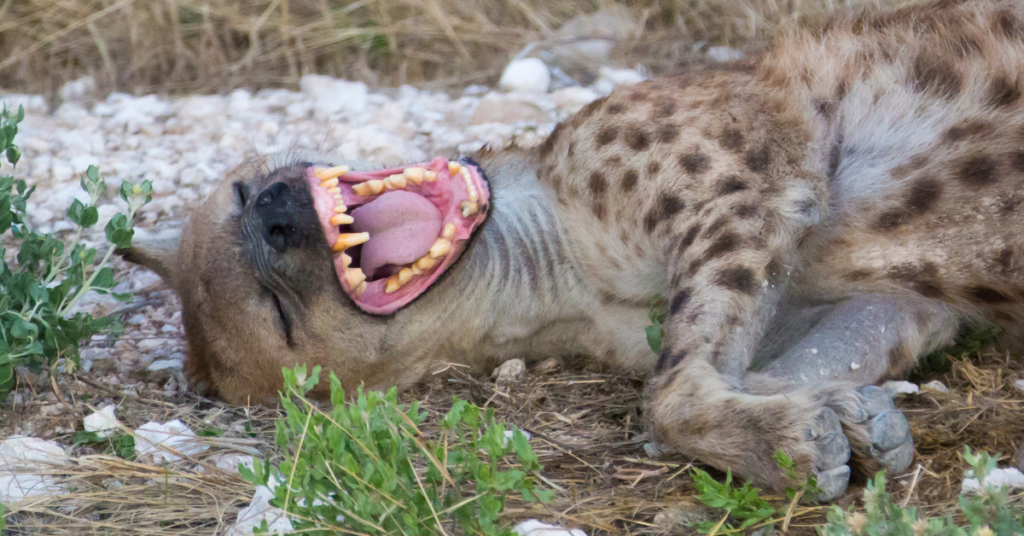Among mammals living in social groups, individuals form communication networks in which they signal their identity and social status, thereby facilitating social interaction. Despite its importance in understanding mammalian societies, the encoding of personal information in voice signals from non-primate mammals has been relatively neglected.
Hyena laughter can encode information about age, individual identity, and dominant/subordinate status, providing information and dominant/subordinate status, providing cues to receivers that could allow for an assessment of a sender’s social position.
The range of messages encoded in hyena laughter likely plays a role in social interactions. This call, along with other vocalizations and other sensory channels, is said to guarantee a set of communication signals that support the complex social system.
As the study has shown, laughter is likely to carry a wide range of messages, certainly not all entirely reliable, but informative enough to play a role in social interactions. The information conveyed by the sounds, along with the chemical, tactile, and visual channels, provide the spotted hyena with a range of communication signals that underlie its complex social system.
Spotted hyenas have an elaborate communication repertoire that includes multiple sensory modalities. Group members recognize each other individually based on characteristic vocalizations, visual cues, and smells. Spotted hyenas make a variety of distinctive sounds: low-pitched moans to call their pups out of the burrow, high-pitched whistles to beg for food or milk, and cattle-like mooing sounds to bring packmates to a halt to create great excitement.
Spotted hyenas are often referred to as laughing hyenas because of their submissive giggles that sound a lot like high-pitched, hysterical human laughter.
Whoops function as rallying calls to gather scattered clan members together to defend the territory boundaries, food resources, the communal den, or
clan-mates in danger. Spotted hyenas also sometimes whoop to recruit hunting partners, or to reunite mothers with their young ones. Finally, whoops are also used as a form of individual display, particularly by adult immigrant males of high rank. Olfactory communication plays an important role in advertising territorial borders, but also functions to signal intrasexual social status among immigrant males, and to maintain social cohesion among adult
females.
According to our results, the tonal appearance of an individual signature is likely to change as the animal ages. Furthermore, age-independent identity and other individual characteristics are mainly encoded by the distribution of energy across the frequency spectrum. Dominant/subordinate status appears to be encoded by variations in the center frequency of the spectrum within THEIR giggles.
The fact that laughter sounds are emitted during combat represents a crucial aspect for the possible evaluation of this social signal. In this way, the multiple giggle notes could provide not only redundant information, but also additional (synergistic) information about the structure created by a particular tone sequence.
To date, no systematic study has attempted to decipher the behavioral context in which giggles are broadcast or their role in the social network. Field researchers have observed that these vocalizations are often produced during feeding competitions by animals denied access to prey by the intervention of higher-ranking individuals. More generally, giggling can occur in non-feeding situations as a result of simple threat from others.
This study was conducted in captivity and our behavioral observations were certainly biased. However, we observed that the hyenas laughed more out of frustration than bullying or chasing. Although emitted during short-distance interactions between two or three people, giggles are loud and spread over long distances. The giggle could benefit a single hyena in a variety of situations.
Calls act as rally calls to gather scattered clan members to defend territory borders, food resources, community dens and clan members in danger. Finally, screaming is also used as a form of solo performance, particularly by high-ranking adult immigrant males. Olfactory communication plays an important role in advertising territorial boundaries, but it also serves to signal intrasexual social status among immigrant males and maintain social cohesion. among adult females.
Thus lone hyena encountering a kill dominated by lions could use its giggle call to rally its clan. The attraction of a neighboring hyena clan or a lion group can also be an issue, as intense competition and giggling may occur over a kill current mob by the giggling. n this situation, one can hypothesize that a dominant hyena might allow subordinate hyena access to food to prevent it from giggling and attracting further attention from unwanted competitors. Or potentially giggling by multiple subordinate animals (giggle chorus) could serve as a distraction for the more dominant animals.
When hearing an individual laugh, hyenas could get some information about “who” is in a competitive situation (individual identity, age class, dominant/subordinate status) and decide to join the giggler, or conversely ignore it or move away.
It is likely that close-range vocalizations like the grunt, groan, and growl, are also multi-informative. Using both “public” and “private” cues would allow hyenas to manage their social interactions with great precision.In this context, the laughs could play a dual role, aimed at both neighboring clan members and distant potential allies.

Erzsebet Frey (Eli Frey) is an ecologist and online entrepreneur with a Master of Science in Ecology from the University of Belgrade. Originally from Serbia, she has lived in Sri Lanka since 2017. Eli has worked internationally in countries like Oman, Brazil, Germany, and Sri Lanka. In 2018, she expanded into SEO and blogging, completing courses from UC Davis and Edinburgh. Eli has founded multiple websites focused on biology, ecology, environmental science, sustainable and simple living, and outdoor activities. She enjoys creating nature and simple living videos on YouTube and participates in speleology, diving, and hiking.
🌿 Explore the Wild Side!
Discover eBooks, guides, templates and stylish wildlife-themed T-shirts, notebooks, scrunchies, bandanas, and tote bags. Perfect for nature lovers and wildlife enthusiasts!
Visit My Shop →
